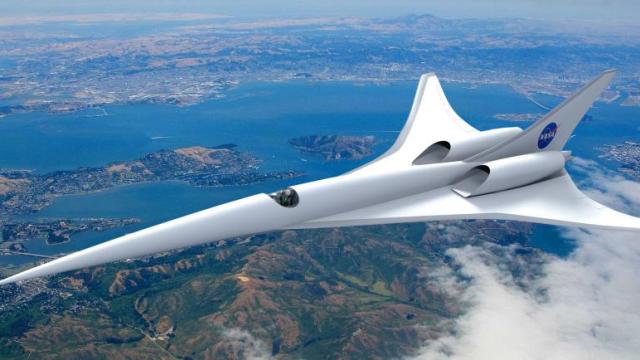Most people don’t know this, but NASA doesn’t only work in exploring space. Its contribution to aeroplane technology — National Aeronautics and Space Administration — has been crucial to the development of safer, faster, more efficient travel. These are their coolest future concepts — some of which could enter service as soon as 2025.
These concepts have been developed working with private companies like Lockheed Martin, Northrop Grumman and Boeing:

This updated future aircraft design concept from NASA research partner Lockheed Martin shows a few changes from another concept seen eight images earlier in this gallery. It is a good example of how simulations and wind tunnel tests, conducted over time, generate data that tell researchers how to improve a design to achieve goals. The goals for a future supersonic aircraft are to produce a much lower-level sonic boom and to reduce emissions. The ultimate goal is to achieve a low enough boom that a current ruling prohibiting supersonic flight over land might be lifted.
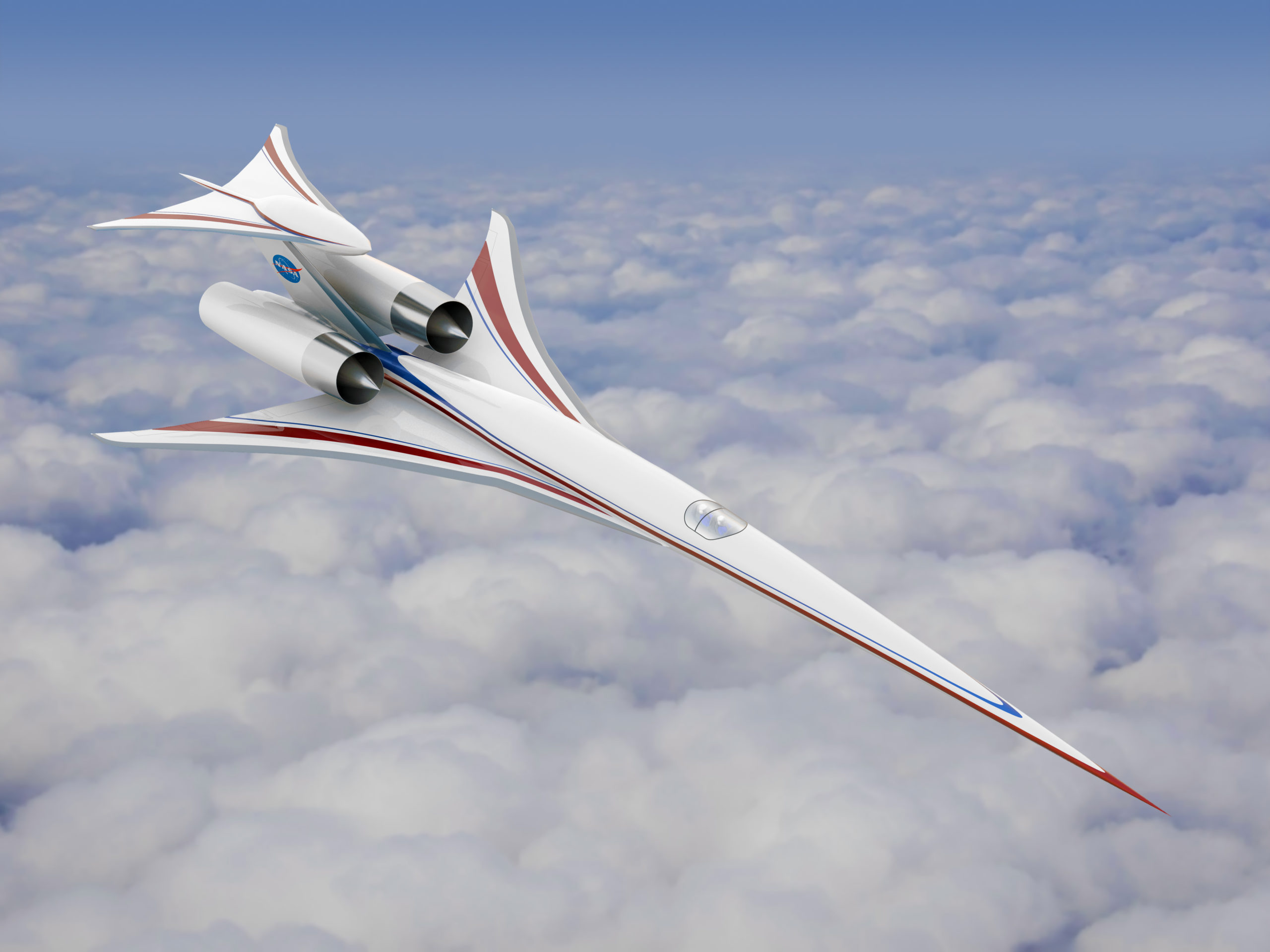
This concept of an aircraft that could fly at supersonic speeds over land is being used by researchers, especially at NASA’s Langley Research Center, to continue to test ideas on ways to reduce the level of sonic booms. Its technologies — the F-100-like propulsion system, a tail blister, and the overall shape — are combined to achieve a lower target perceived decibel level.
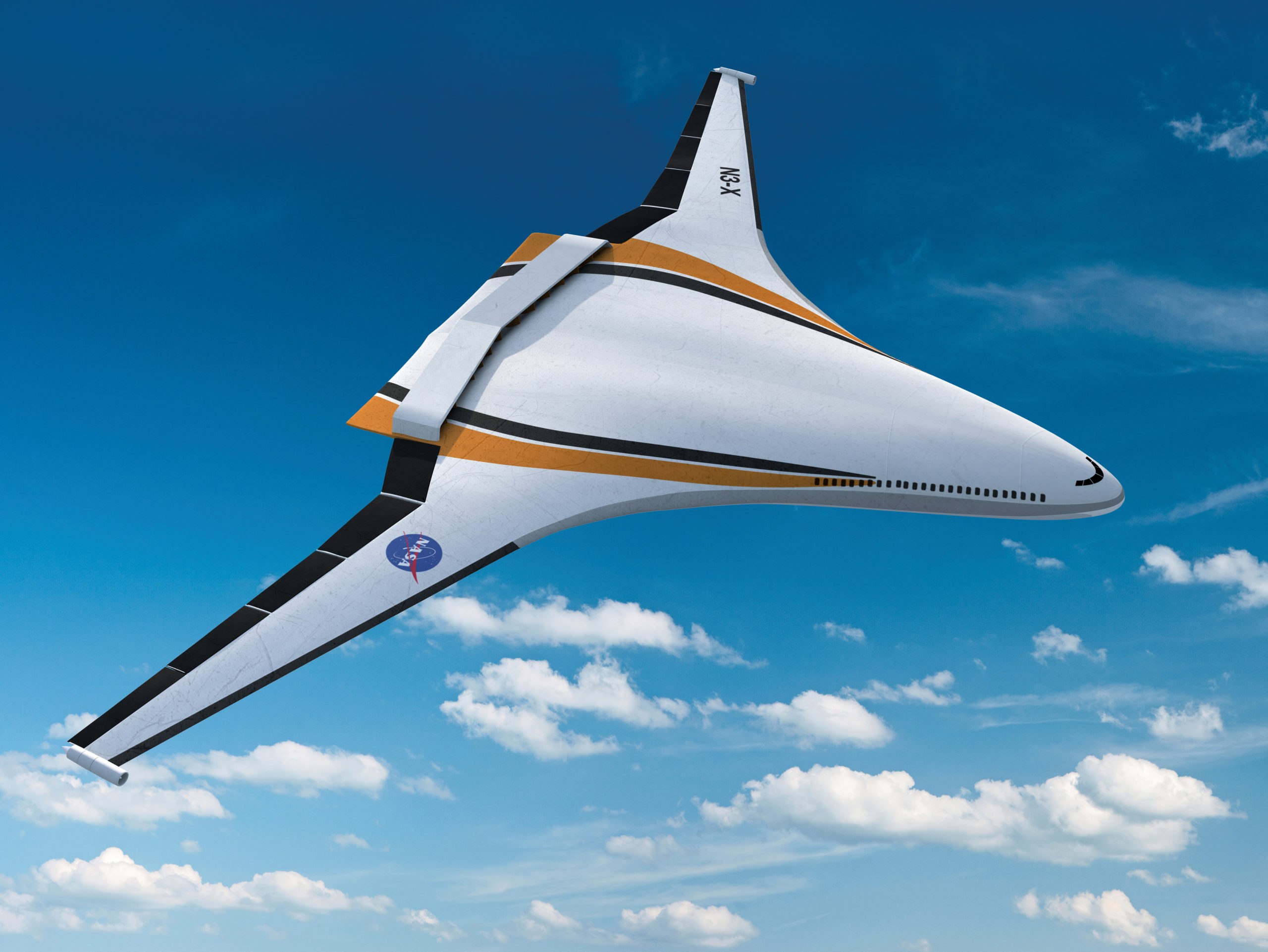
This idea for a possible future aircraft is called a “hybrid wing body” or sometimes a blended wing body. In this design, the wing blends seamlessly into the body of the aircraft, which makes it extremely aerodynamic and holds great promise for dramatic reductions in fuel consumption, noise and emissions.
NASA develops concepts like these to test in computer simulations and as models in wind tunnels to prove whether the possible benefits would actually occur.
This NASA concept, called the “N3-X,” uses a number of superconducting electric motors to drive the distributed fans to lower the fuel burn, emissions, and noise. The power to drive these electric fans is generated by two wing-tip mounted gas-turbine-driven superconducting electric generators.
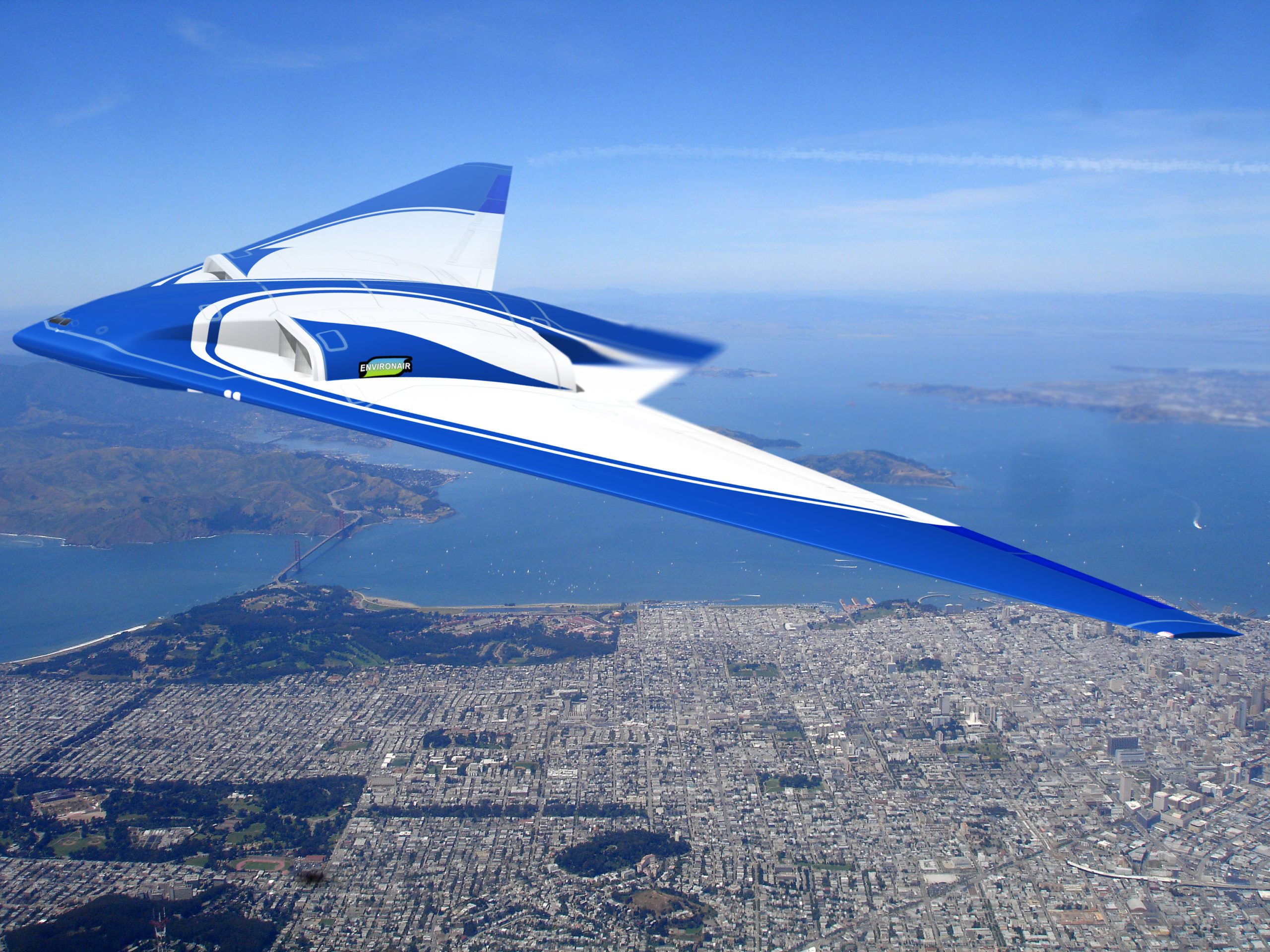
This computer-generated image shows a possible future “flying wing” aircraft, very efficiently and quietly in flight over populated areas. This kind of design, produced by Northrop Grumman, would most likely carry cargo at first and then also carry passengers.
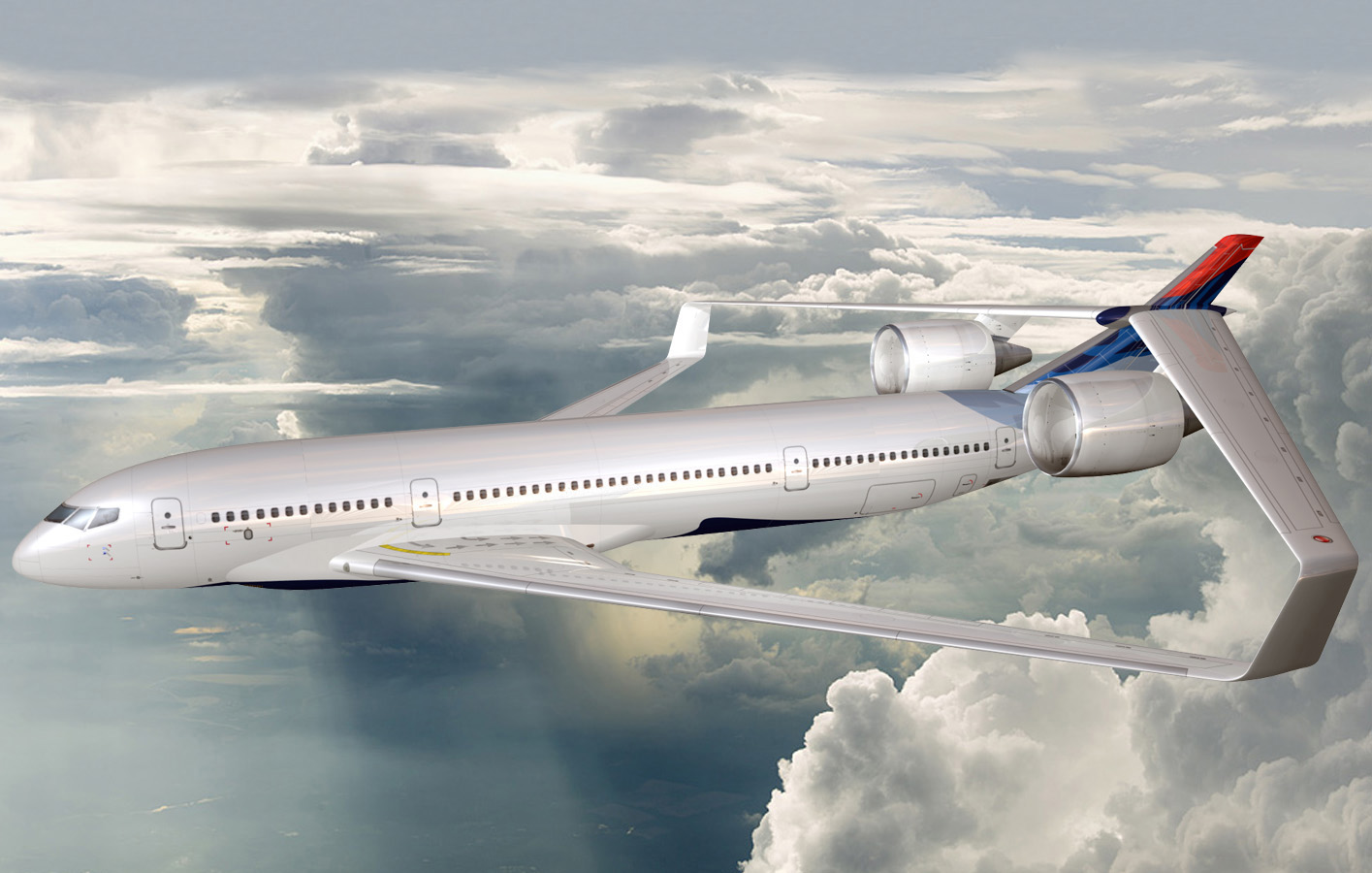
Lockheed Martin’s advanced vehicle concept proposes a box wing design, which is now feasible thanks to modern lightweight composite (nonmetallic) materials, landing gear technologies and other advancements. Its Rolls Royce Liberty Works Ultra Fan Engine achieves a bypass ratio (flow of air around engine compared to through the engine) nearly five times greater than current engines, pushing the limits of turbofan technology to maximise efficiency.
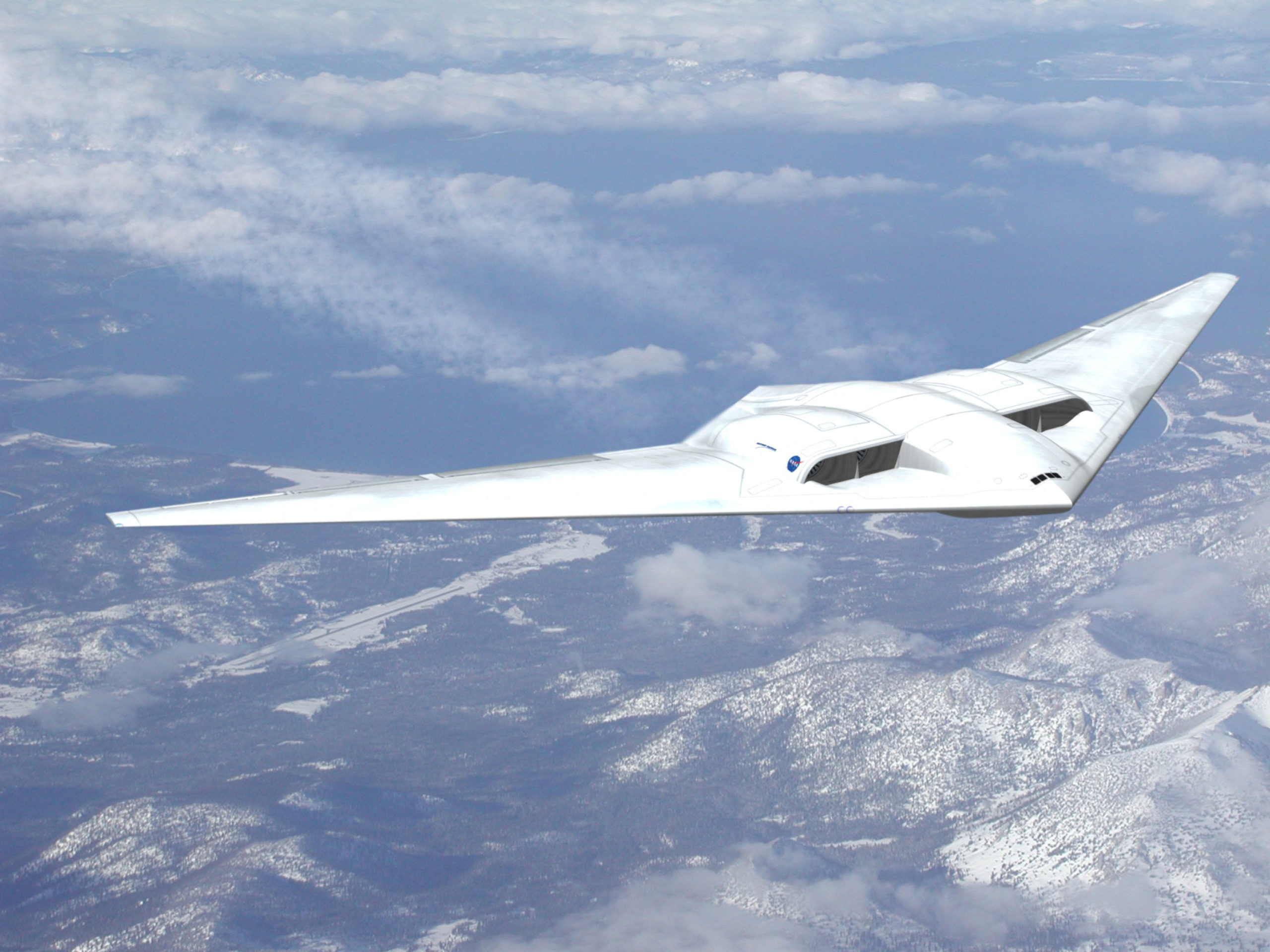
Northrop Grumman’s concept is based on the extremely aerodynamic “flying wing” design. The four Rolls Royce engines are embedded in the upper surface of the wing to achieve maximum noise shielding. The company used its expertise in building military planes without a stabilizing tail to propose this design for the commercial aviation market.
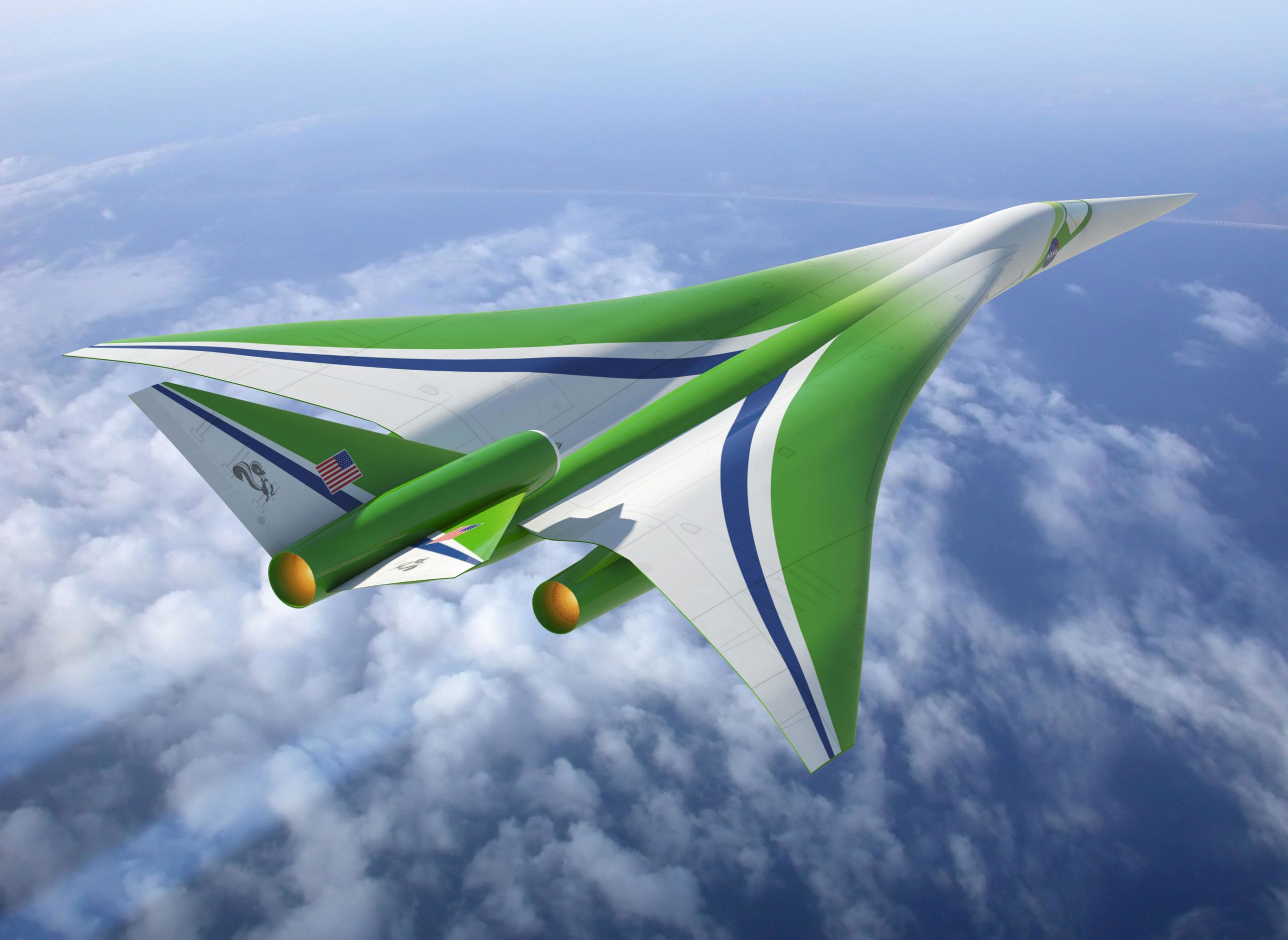
Our ability to fly at supersonic speeds over land in civil aircraft depends on our ability to reduce the level of sonic booms. NASA has been exploring a variety of options for quieting the boom, starting with design concepts and moving through wind tunnel tests to flight tests of new technologies. This rendering of a possible future civil supersonic transport shows a vehicle that is shaped to reduce the sonic shockwave signature and also to reduce drag.
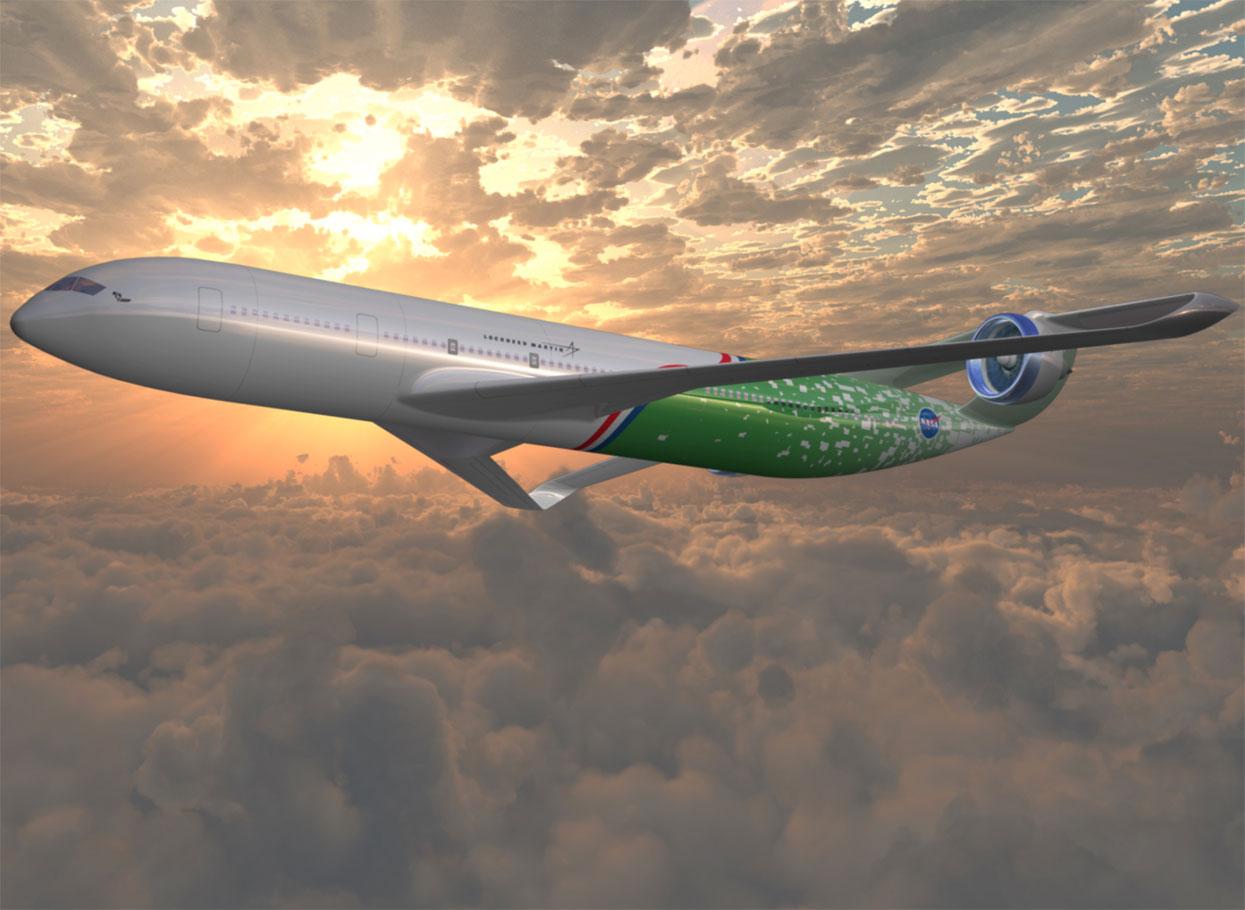
This artist’s concept shows a possible future subsonic aircraft using a boxed- or joined-wing configuration to reduce drag and increase fuel efficiency. This design of an aircraft that could enter service in the 2020 timeframe is one of a number of designs being explored by NASA with teams of researchers from industry and universities.
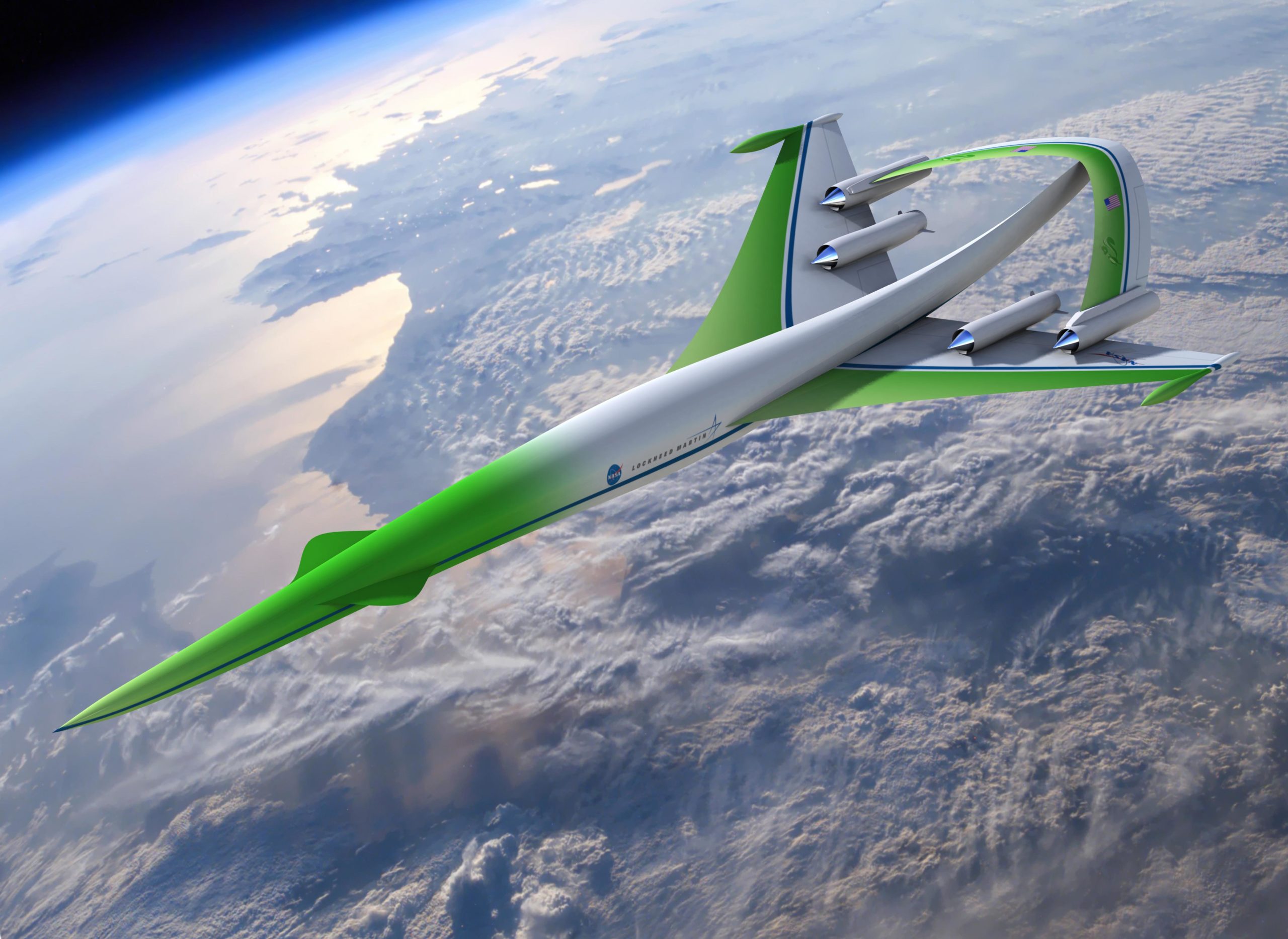
This future aircraft design concept for supersonic flight over land comes from the team led by the Lockheed Martin Corporation.
The team used simulation tools to show it was possible to achieve over-land flight by dramatically lowering the level of sonic booms through the use of an “inverted-V” engine-under wing configuration. Other revolutionary technologies help achieve range, payload and environmental goals.
This concept is one of two designs presented in April 2010 to the NASA Aeronautics Research Mission Directorate for its NASA Research Announcement-funded studies into advanced supersonic cruise aircraft that could enter service in the 2030-2035 timeframe.

The “Icon-II” future aircraft design concept for supersonic flight over land comes from the team led by The Boeing Company.
A design that achieves fuel burn reduction and airport noise goals, it also achieves large reductions in sonic boom noise levels that will meet the target level required to make supersonic flight over land possible.
This concept is one of two designs presented in April 2010 to the NASA Aeronautics Research Mission Directorate for its NASA Research Announcement-funded studies into advanced supersonic cruise aircraft that could enter service in the 2030-2035 timeframe.
